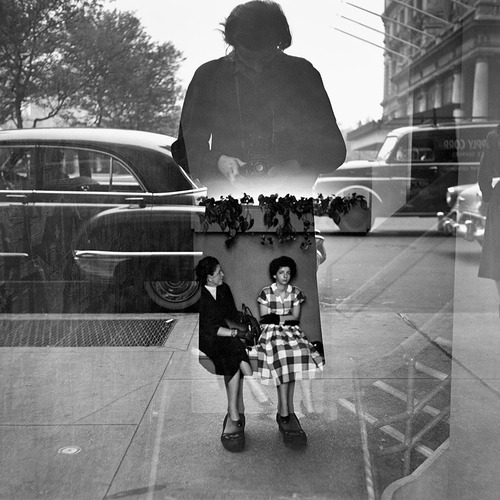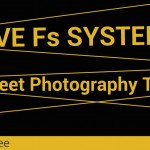The Masterclass Critique | Vivian Maier
The Masterclass Critique | Vivian Maier
Eccentrically liberal, highly self-educated, but tenaciously private, the nanny who lived a double life as a photographer is this month’s Master Street Photographer: Vivian Maier!
THE PHOTOGRAPHER
In true liberal fashion, Vivian Maier chose to be non-materialistic and took up a job as a nanny to three children who will eventually take care of her in her latter years in life (www.vivianmaier.com). Surprisingly, this talented artist never shared her photos to any living soul. When her financial situation turned for the worse, her storage case containing all the undeveloped negatives (literally 100,000 rolls of them) along with other possessions were auctioned off as a result of delinquent bill payments. This storage case would be the one true treasure that historian/collector John Maloof would unearth. Without him, Vivian Maier’s images would never have been shared to anyone at all. To this day, Maier’s archive have yet to be completed by John Maloof, who laboriously scans and analyzes her work.
HER WORK
As a whole, one would notice that a certain elegance, energy, and dignity hangs in the photos she took, reflecting her liberal ideologies and sophisticated taste. The world was the canvass of her own story. For one, her self portraits adequately expressed the kind of person she was: mysterious, artistic, smart. She clearly understood how light behaved and masterfully maneuvered through her devices (for the most part a Rolleiflex) to capture what she saw. The world is deprived of her own words as to why and how she took her shots, but we can approximate her thoughts with the series of photos she left behind.
IMAGE 1 shows a man’s shoes among the cans on display behind a glass panel. One of Maier’s signature styles is to photograph reflections, which, in this case, is given a more artistic touch because of the texture produced by the curtain behind the panel. She often took photos of the things like shoes, hands, and peculiar items on the streets that we ignored, perhaps because most of us are too focused on what’s up ahead. To notice the little things requires that we slow down and more deliberately see the world anew. Her camera was simply a tool to capture what she saw. How about us? What are the little things that we ignore in the streets? Is what’s ahead really more important than what’s around?
IMAGE 2 shows a deliberate portrait of a young woman in a car, emphasizing the subjects’ relaxed expression and calm in the presence of Maier. Although in this image Vivian did away with small details like the under-cropped door knob at the bottom left, her image brings the message across: the person in the photo is beautiful. Biographers remarked that Vivian actually engaged in small talk before taking portrait shots of people in the street. However, what is notable here is she took portraits of people who often struggled to get by—just like she did. Their stories were hers as well. They shared the same canvass. She effectively connected with her subjects because she knew what they were going through. She gave these people a face that told a story. What about us: As street photographers, what part of the person’s story do we expose for others to see? Are these stories what would make our audience appreciate our subjects more?
IMAGE 3 shows two young girls who appear to be holding the ends of jumping rope, joyfully playing along an empty street in a rundown part of the city. The slight tilt adds motion to the image whose subjects were caught playing. The exposure settings were just right to show their bright faces seemingly wanting to show her a trick or two. Her presence was evident, exposing all the more clearly the expressions that she wanted to capture from the children: joy (without the fear of appearing “silly”). Vivian Maier didn’t simply take photos but was also part of the photo. Photography was a way for her to connect with people. What about us? How has photography affected our connections with other people? Has photography made us more connected or all the more detached from the rest of society?
IMAGE 4 shows how she has a knack for taking photos of reflections which often included her silhouette. Notice how composition elements like reflection, silhouettes, exposure and juxtaposition work together to produce a memorable and creative “selfie”. Also, notice how the people inside already noticed her standing oddly in front of a glass, indicating that she took her time to compose and adjust the settings. Patiently, she composed a good shot. Perhaps, so should we. She loved to include herself in her photos, almost like a physical statement saying “I’m a part of THIS world.” Indeed she was. Reflections are parts of the world that show who we are from another’s viewpoint. As photographers, how often do we take a photo of ourselves through how the world sees us (in the form a reflection)? We take photos of strangers everyday yet have we seen our own photos in our “natural environments”? How do we think does the world see us? And how does that affect our photography?
HOW WE CAN BE LIKE VIVIAN MAIER
As a Master Street Photographer, Vivian Maier was a step ahead of the rest because of her clear vision, fearless personality and equipment mastery. However, don’t let her fame dash your hopes of becoming a master yourself. She never stopped taking photos of what she loved, even if it meant leaving these moments undeveloped.
As an aspiring street photographer, keep shooting. Your photos of the everyday life will be precious documents that the world will soon thank you for. If fame is slow to cook, steady your sights and keep shooting. The marinating process is yet to be completed. Fame was not Vivian Maier’s goal in taking photos, but rather a byproduct of the passion she had in capturing important and interesting moments in her life. Therefore, shoot because you love taking photos, not just because you love the “likes” that come with them. Only then will your photos acquire a distinct flavor that will make you stand out from the rest.
Note: I do not own any of the images in this post.
For more of Vivian Maier’s photos, you may go to the Official Website.
This content was created by the Street View Photography community – for the community of Street Photographers.
Author and Production: Geoff Mercado
REFERENCES
Introduction Image: http://www.vivianmaier.com/gallery/self-portraits/#slide-33
Image 1: http://www.vivianmaier.com/gallery/street-1/#slide-45
Image 2: http://www.vivianmaier.com/gallery/street-2/#slide-6
Image 3: http://www.vivianmaier.com/gallery/street-2/
Image 4: http://www.vivianmaier.com/gallery/self-portraits/

 Follow
Follow











